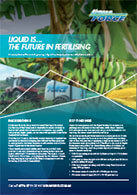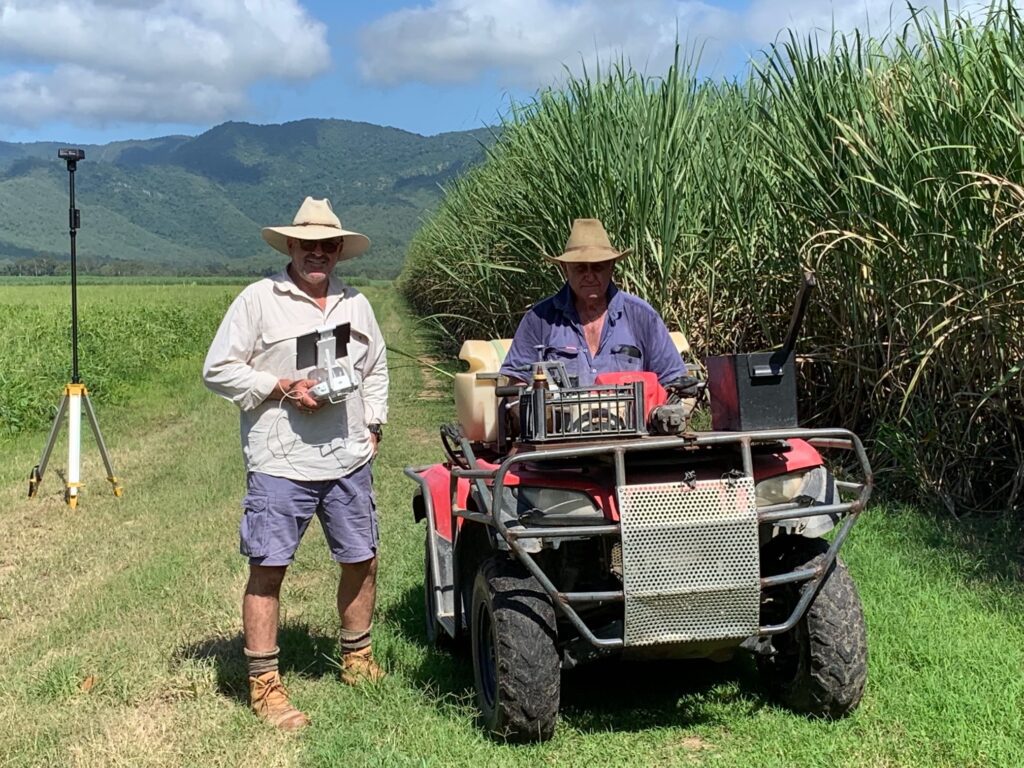
October 2022 LAND HUB Project newsletter
The LAND HUB Projects are part of the Mackay Whitsunday, Lower Herbert and Tully Johnstone Water Quality Programs, funded by the partnership between the Australian Government’s Reef Trust and the Great Barrier Reef Foundation, designed to improve water quality flowing off the land to the Great Barrier Reef by reducing the runoff of dissolved inorganic nitrogen.
Participating project growers from our three regions are starting to see improvements in productivity after developing optimised Nutrient Management Plans in LAND HUB. Three growers share their stories below.
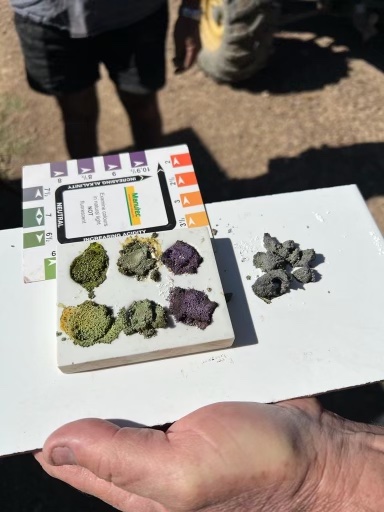
We are also excited to share that new LAND HUB functionality is on its way.
Harvester data integration will soon enable you to understand how yield is affected by your paddock inputs, which will close the loop on understanding the cause and effect of your farming decisions. We are also developing a light version of LAND for hand-held devices, which growers are helping to co-design.
Soon you have all your 2022 record keeping done in LAND and smooth farm data rollovers year on year, as well as yield insights and access to your priority data on your handheld device.
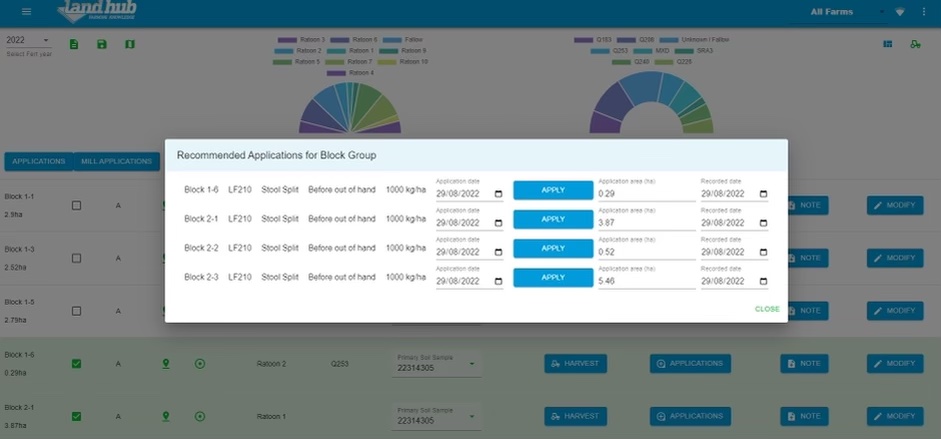
“It would be great to make records immediately in the field so you don’t forget later“
MACKAY WHITSUNDAYS – COLIN & LENORE
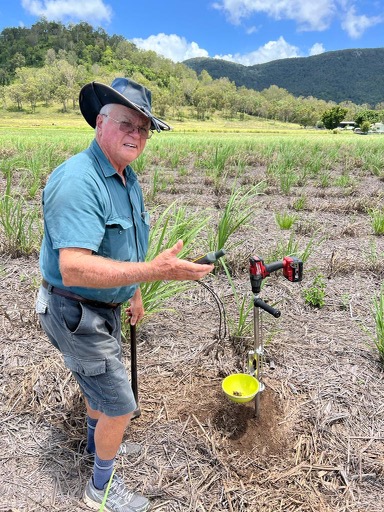
BACKGROUND
Colin and Lenore run two sugarcane farms: one in Karloo just east of the Bruce Highway and the other in undulating country at Carmila West. Cropping is all rainfed, without any irrigation.
Karloo soils are typically sand or loam overlaying a sodic clay subsoil. At Carmila West, soils are a mix of loam and a sand or loam overlaying sodic clay. Carmila West country can be subject to surface runoff with seasonal rainfall. Crop nutrient loss is a concern.
To improve their farming practice, Colin and Lenore shifted from surface application of liquid Dunder blends to sub-surface stool-split application.
IMPROVEMENT GOALS
Colin and Lenore wanted to reduce the risk of surface runoff in fertilised paddocks with rainfall, especially on the small undulating area of the Carmila West farm. Its paddocks have short rows and tight corners, which make it difficult for contract fertiliser applicators to operate economically so Colin decided to do his own fertiliser application with his own equipment. The shift from surface to sub-surface stool-split application required an innovative equipment Design.
“Fertiliser that leaves my paddock is money lost, it does not grow my crop and it is not good for the environment or for water quality.”
The unit uses two 1000 L liquid fertiliser pods mounted side by side on the tool bar for machine stability and to ensure even weight distribution for correct coulter depth control in the crop row. The unit is powered by a PTO driven liquid fertiliser-ready Viton diaphragm pump and fitted with rate-control valves for calibration of flow rate matched to tractor speed.
Colin says that as well as being able to do his own fertiliser application, the liquid product allows him flexibility compared with granular fertiliser. With rain events interrupting application, the fertiliser can be stored in the on-farm storage tank until application can resume.
FUTURE GOALS
Colin and Lenore aim to reach BMP accreditation with a combination of this practice and the optimised whole of farm Nutrient Management Plan developed in LAND HUB.
Their next step is to fit GPS rate control and machine guidance for the applicator. EM soil surveys and drone imagery mapping informs farmers of differences in soil type and in crop biomass. These accurate insights combine with GPS rate control machinery to deliver zonal management of farm and crop inputs.
The soil types on the property are generally quite sandy with a mix of grey and red sands, red loams and sandy loams overlying either friable clays on the higher elevations or sodic clays in the lower areas.
Numerous gullies run through the farm, which are well maintained with vegetation, primarily heavily grassed and trees. They usually grow a legume cover crop where possible on fallow cane land.
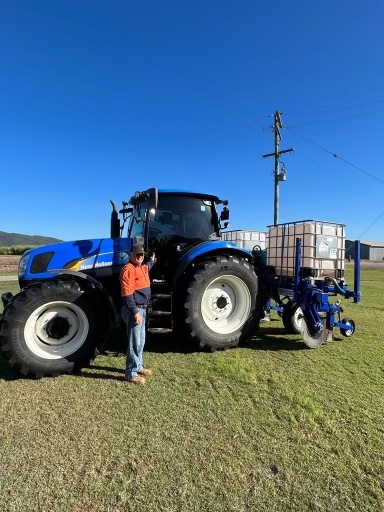
LOWER HERBERT – DON & CARMEL

BACKGROUND
Don and Carmel have been managing their farm in the Upper Stone area of the Herbert catchment for 36 years. It was managed initially as cattle on improved pasture but for the past 31 years they’ve grown sugarcane, while still running a few head of cattle and sheep on the property. As is typical in the Herbert, this farm is usually rainfed but has supplementary irrigation available.
The soil types on the property are generally quite sandy with a mix of grey and red sands, red loams and sandy loams overlying either friable clays on the higher elevations or sodic clays in the lower areas.
Numerous gullies run through the farm, which are well maintained with vegetation, primarily heavily grassed and trees. They usually grow a legume cover crop where possible on fallow cane land.
Don and Carmel joined the LAND HUB project in May 2021 to help refine their nutrient management and develop more specific recommendations across the farm. Don is very passionate about the land he manages and already very conscious of the practices he uses for environmental sustainability.
IMPROVEMENT GOALS
Don and Carmel wanted to tailor fertiliser application to specific management zones and identify any key missing ingredients to push towards maximum nutrient use efficiency on the farm.
They undertook intensive soil testing on the different soil types across the farm and as a result their previous fertiliser analysis was adjusted with one product removed entirely from the whole farm. All this information has been added into their LAND HUB profile, and Don can now see and adjust his fertiliser within the LAND program, where each block shows its own requirements.
PRACTICE CHANGE PROGRESS TO DATE
Drone imagery of the whole farm has been undertaken and this is now being followed up with EM mapping across the farm. Don is on to his second year of nutrient management planning using LAND HUB. The enhanced information acquired to date will help inform his plan for the upcoming fertilising season.
The LAND project allocates growers a small incentive grant to use towards improving their practices. In Don’s case he needed some storage capacity to be able to implement different liquid fertiliser products so he utilised the grant to purchase a storage tank so he can now run two different products at a time.
This has helped refine the nutrient application possibilities on his farm and tailor applications to specific management zones. He is also using specific nutrient products, to allow for additional adjustments to be made.
FUTURE GOALS
The next steps for Don and Carmel are to pull all the information together from the drone imagery, EM mapping and soil sampling to further refine their LAND Nutrient Management Plan. They also intend creating a soil sampling plan to fill gaps and identify zones that may need adjusting. All of this information is available in the LAND HUB app, which Don and Carmel have access to for easy record keeping. This will allow them to continue assessing and refining their farm management plan into the future.
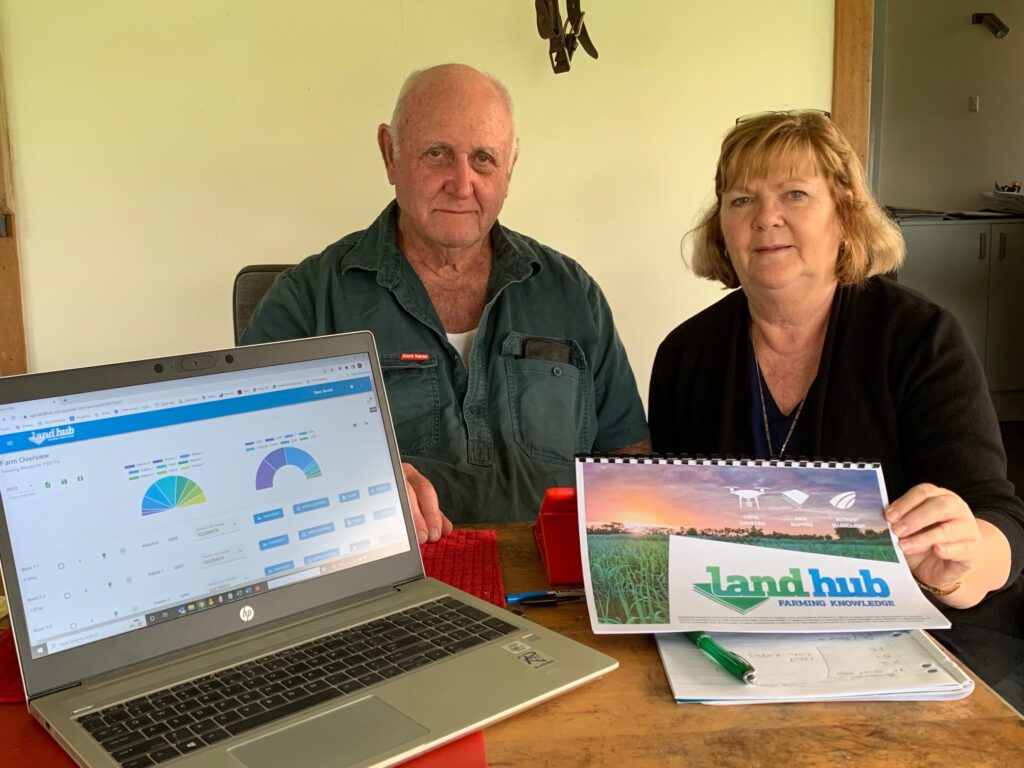
“I like to keep the environment and my farm in good shape. Better decisions I can make towards that outcome are the key to keeping my farm productive for the long term.”
TULLY JOHNSTONE – DON COLLS

BACKGROUND
Don Colls is a sugarcane farmer from the eastern side of the Lower Tully catchment. He grew up in Cairns, on a cane farm in Redlynch, and moved to Tully in 1995 where he has been working on his current farm ever since.
Don is a self-confessed workaholic and stays across all the factors affecting his business including current cane prices, industry direction, weather patterns and emerging varieties. He also likes to have record keeping at his fingertips and is looking forward to moving away from paper based record keeping so he jumped at the chance to participate in LiquaForce’s LAND project.
Don is expecting that using the LAND hub platform for digital farm data management and insights will help deliver improvements in his fertiliser application practices and rates. It will complement technology he is using such as rate controllers, drone mapping, EM insights and increased soil testing. He says he will gain benefits without it costing him more to upgrade his record keeping.
“I’m planning to buy an IPAD or Laptop with the grower incentive grant so I can upgrade to electronic record keeping. I’m excited to be able to record actual fertiliser application rates in LAND HUB, even when I’m working in the field.”
This will deliver efficiencies for the farm and water quality outcomes for the catchment as we get more precise with tailored nutrient application practices.
“I’m looking to reduce my rate of fertiliser without compromising productivity, which will increase my return.”
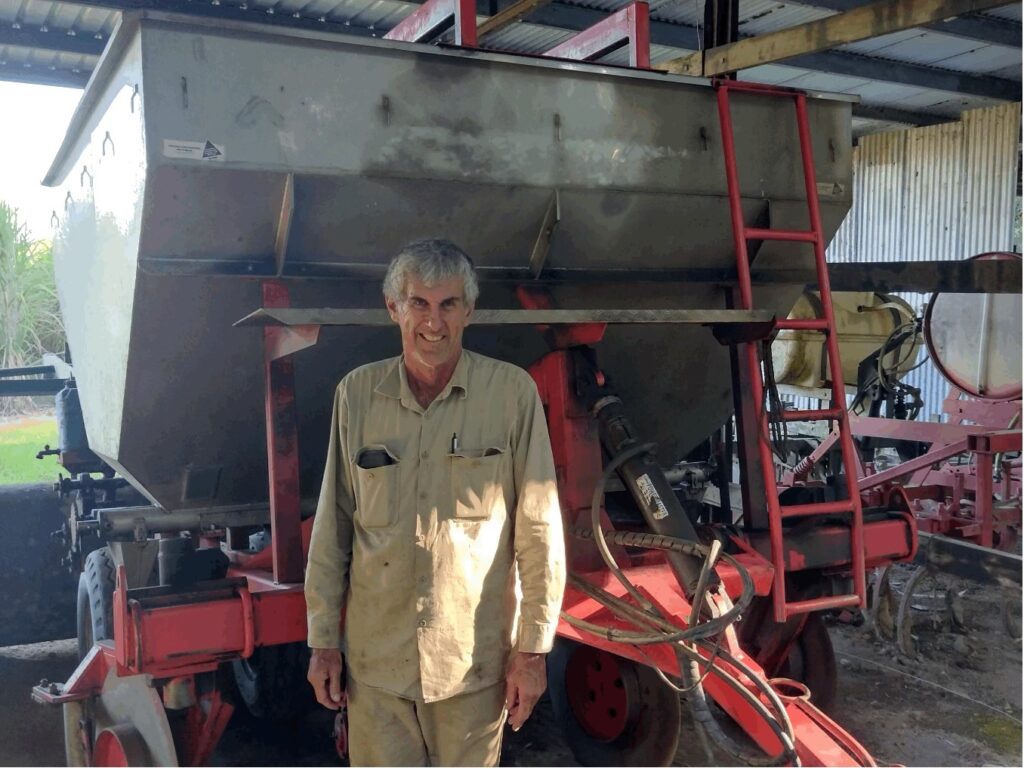
If you want to learn more about the Land Hub program follow this link: https://www.landhub.com.au/

